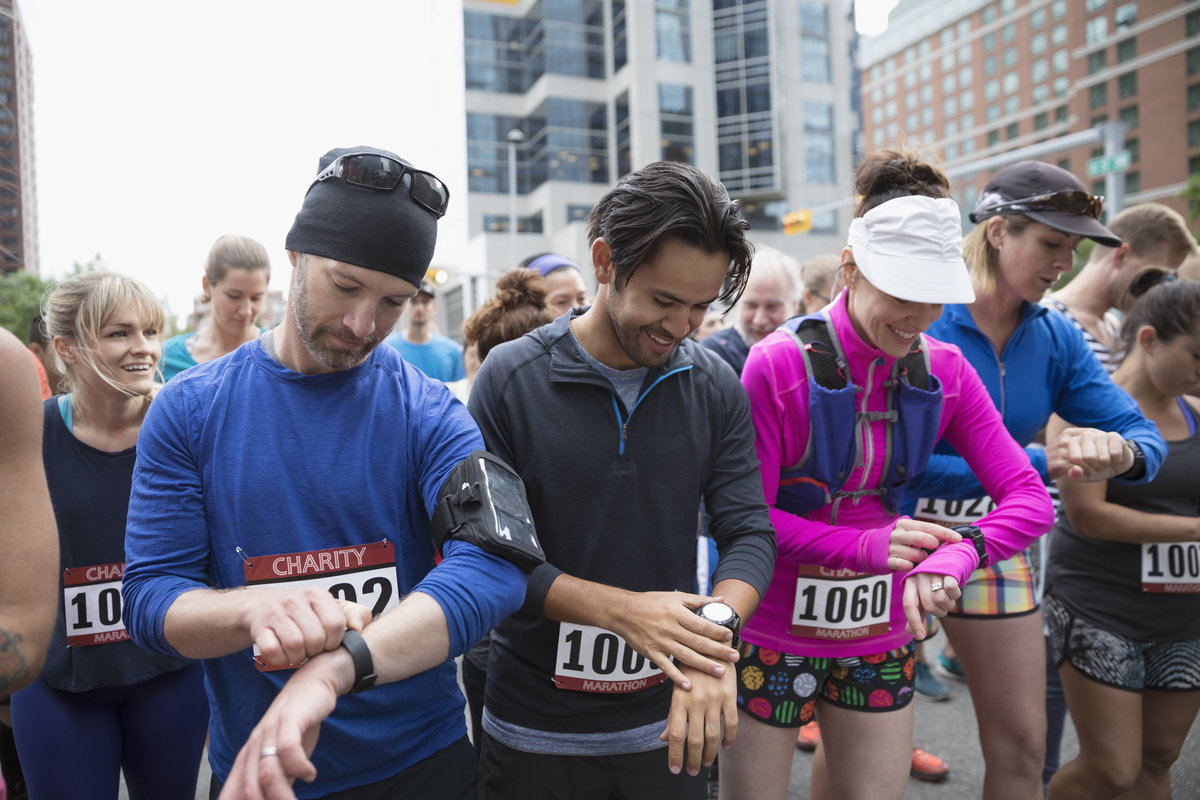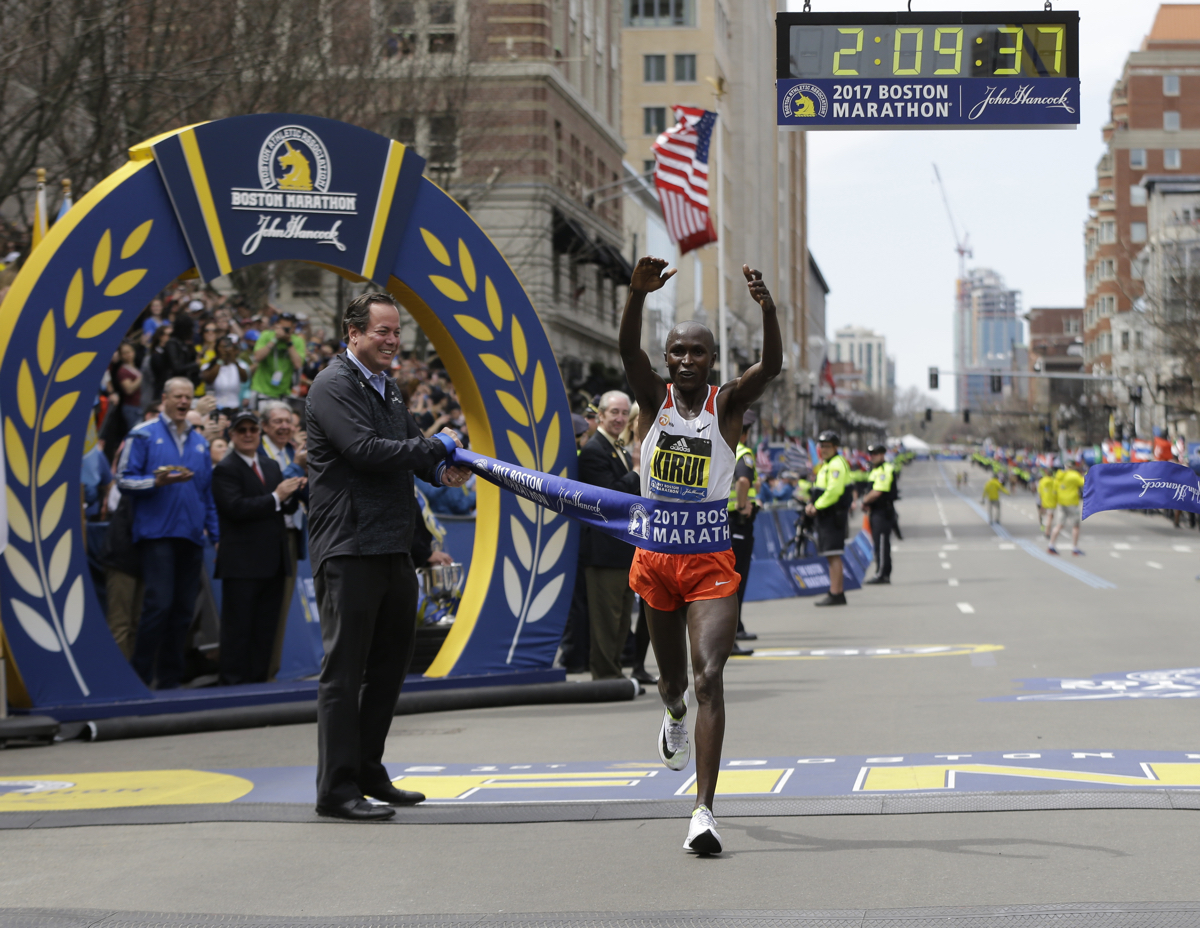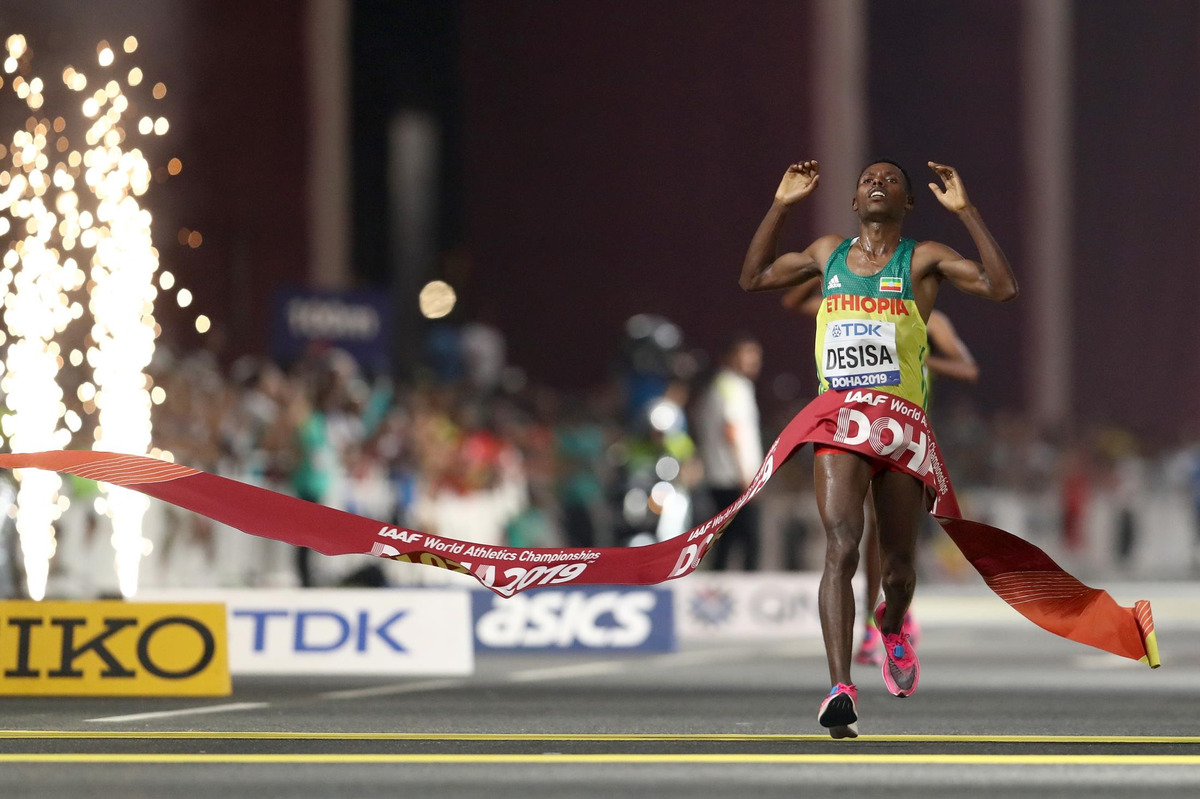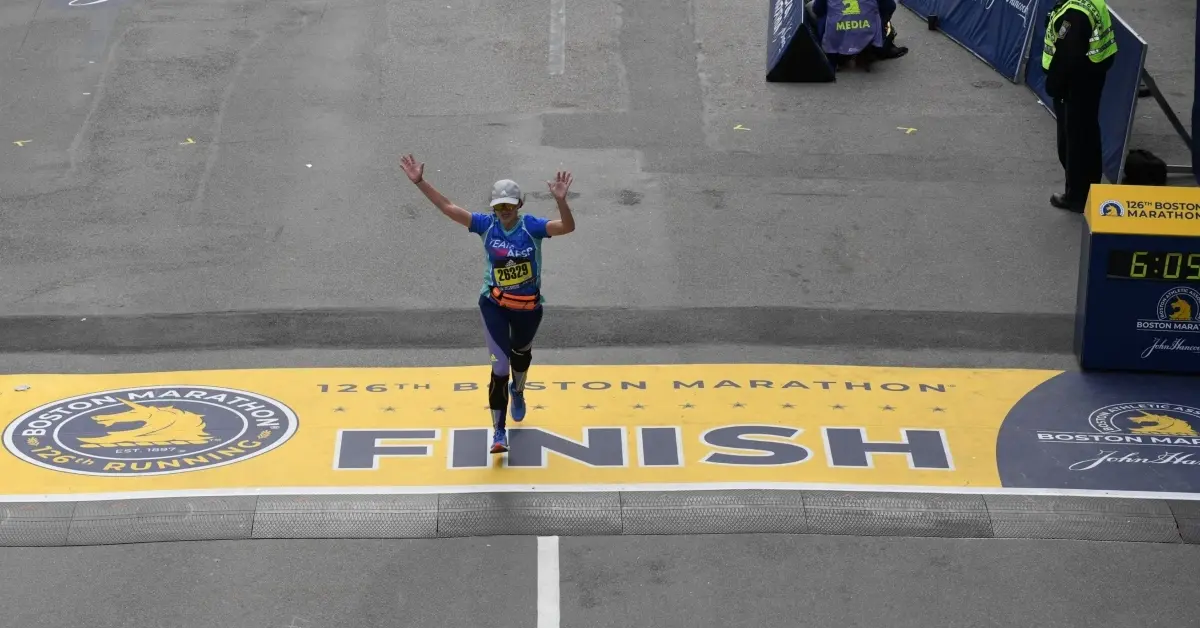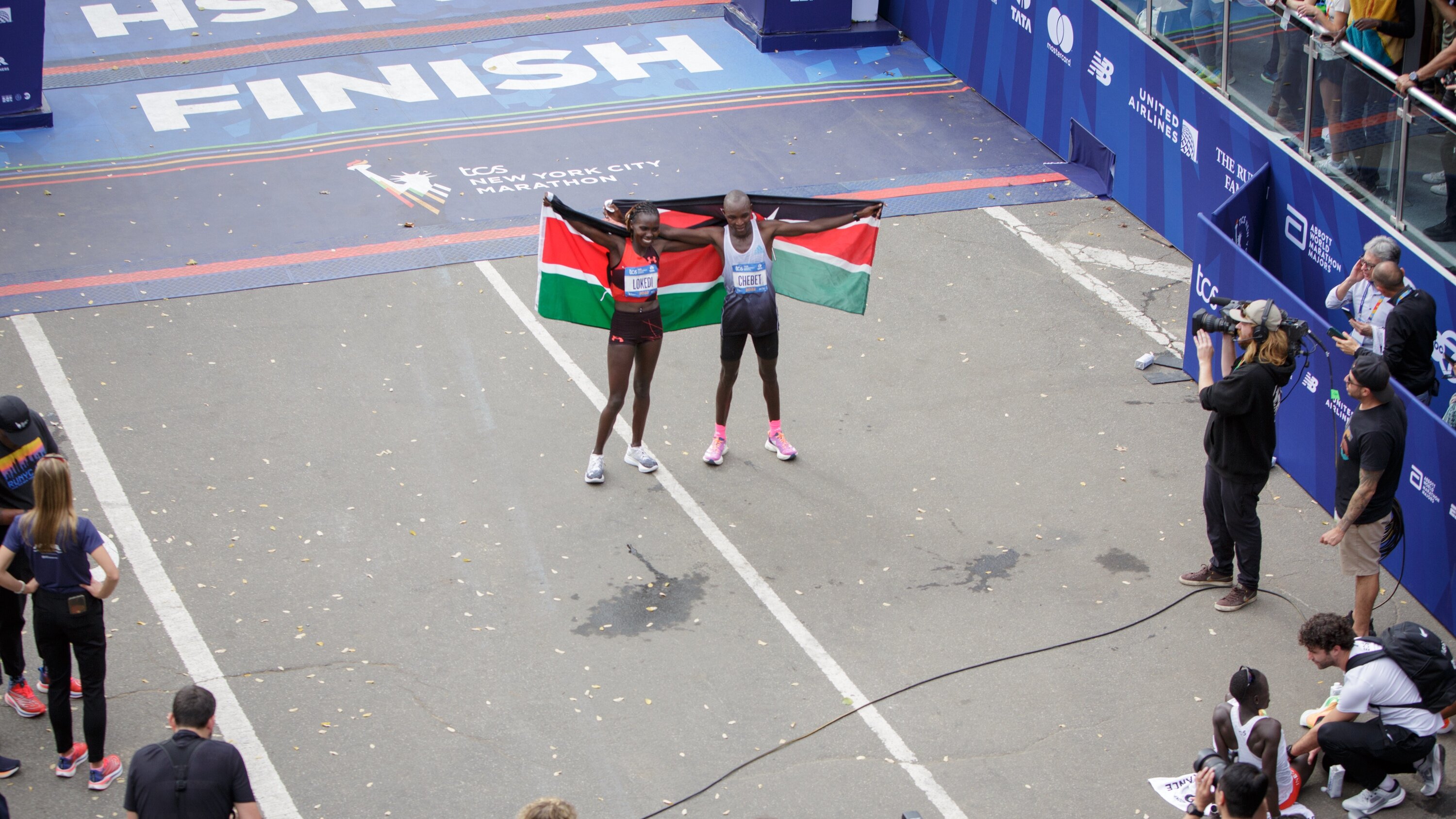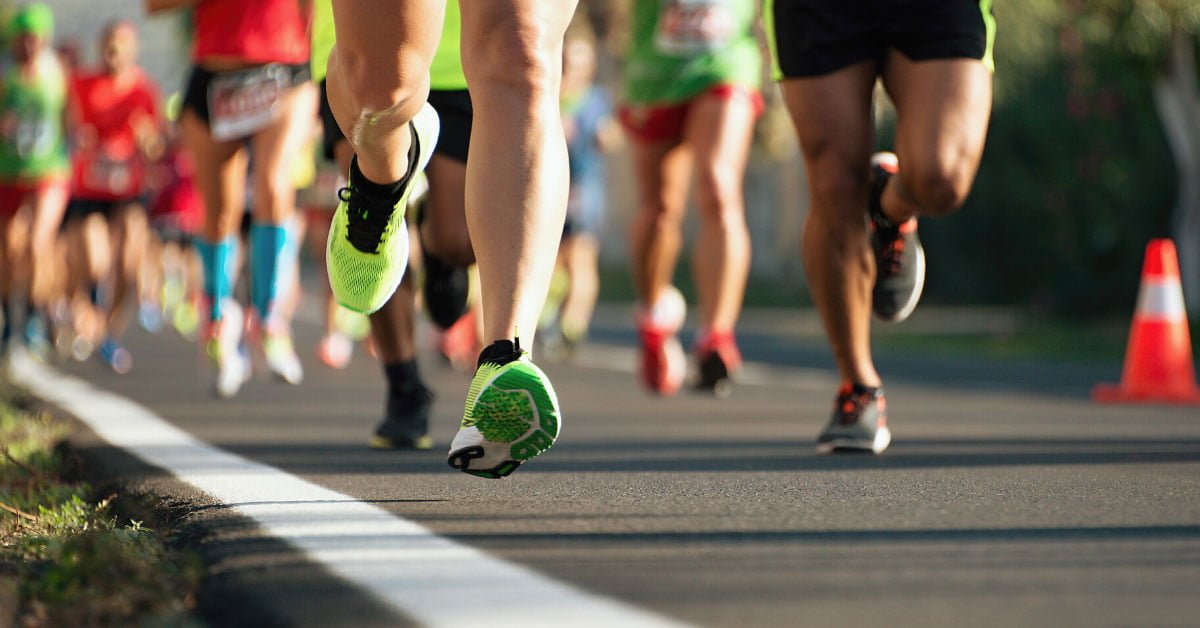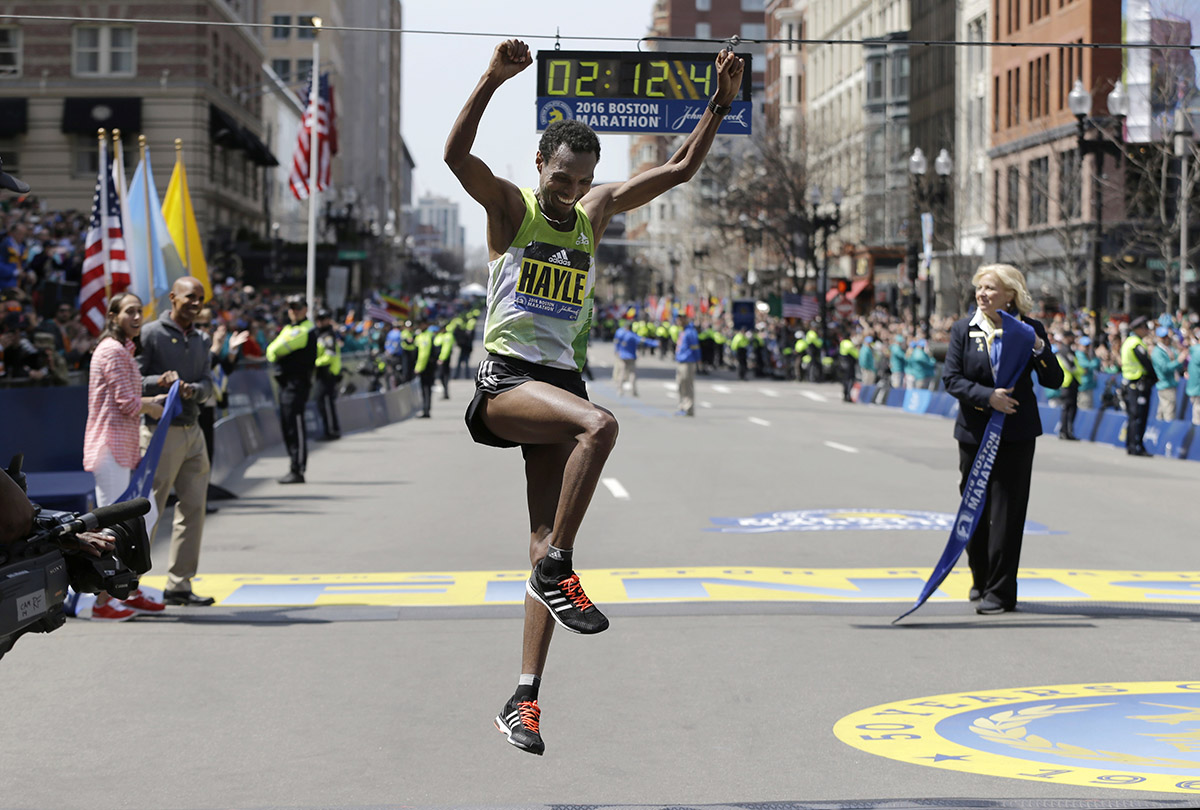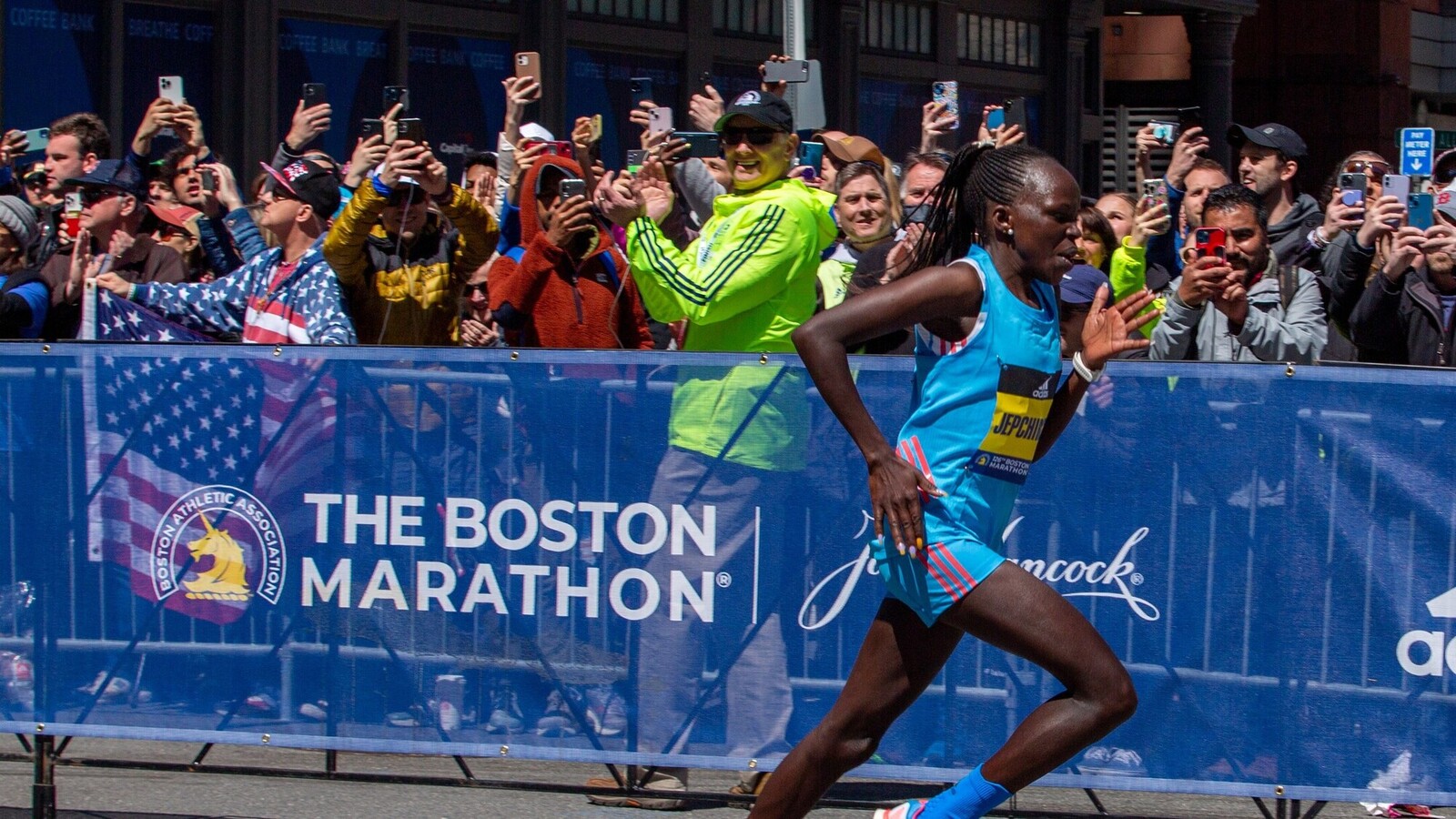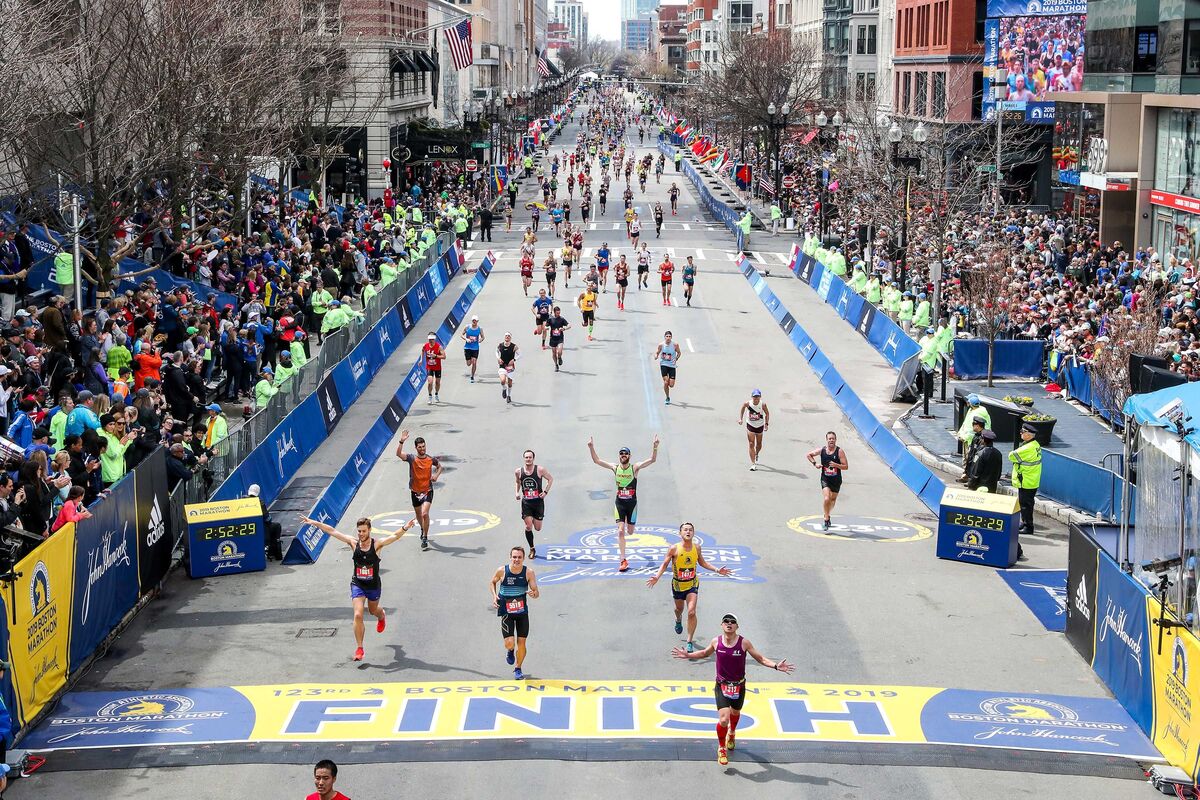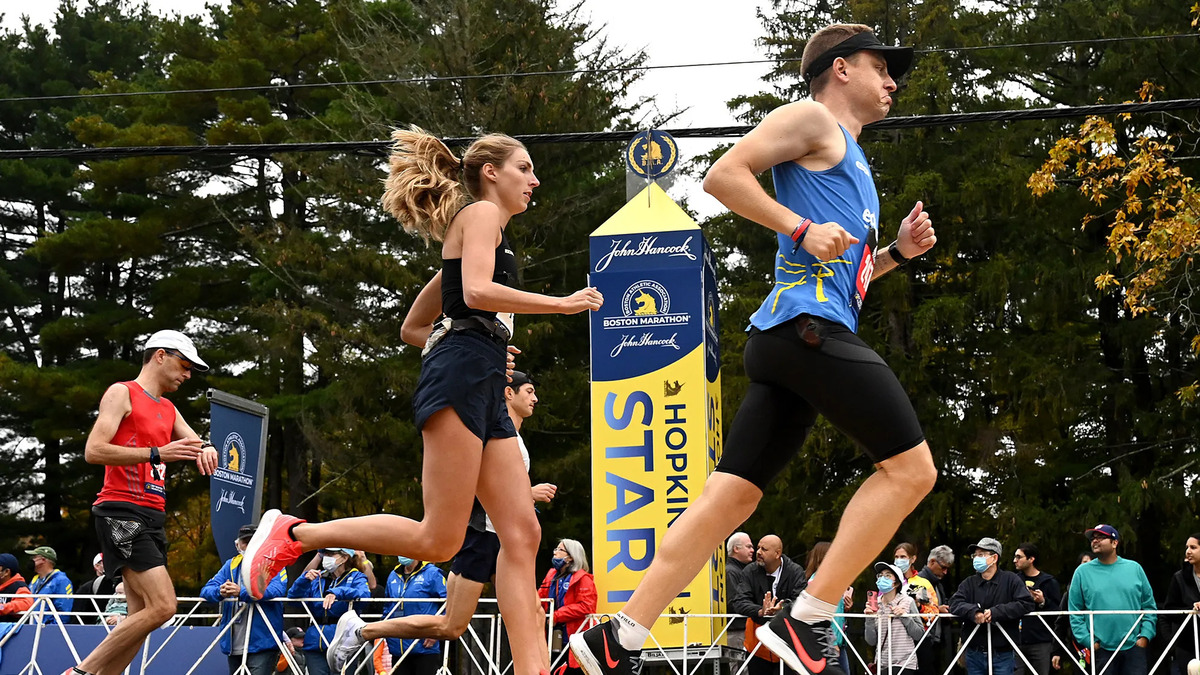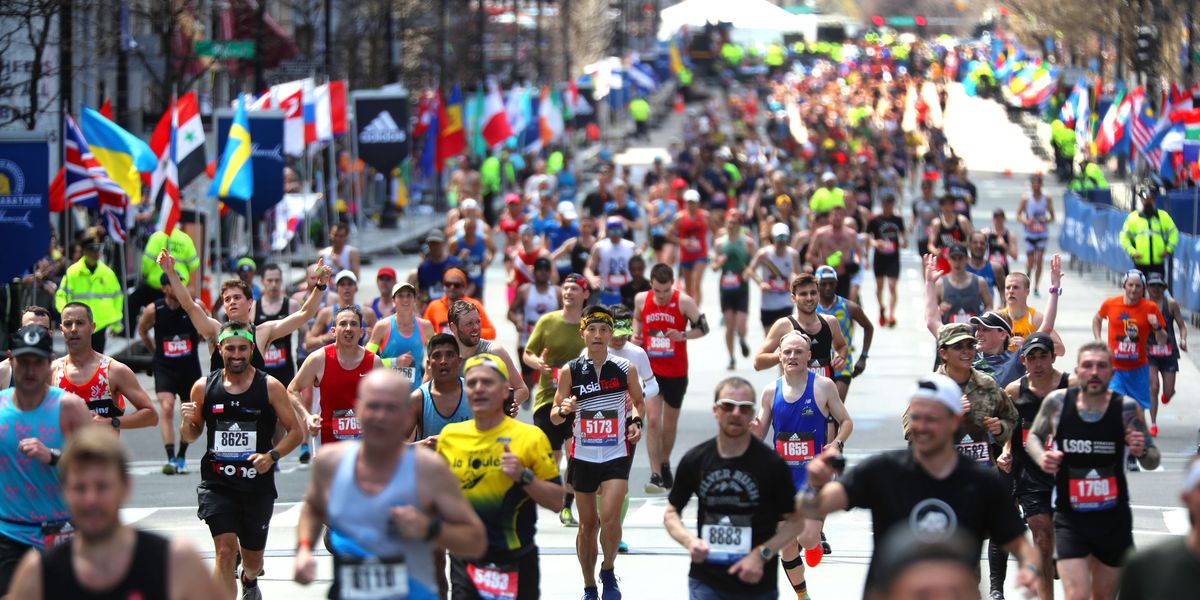

Featured
Why Is The Boston Marathon So Famous
Modified: January 22, 2024
Discover why the Boston Marathon is synonymous with fame and glory. Explore the rich history and iconic moments of this legendary race.
Introduction
The Boston Marathon is one of the most prestigious and iconic races in the world, attracting runners from all over the globe. Held annually on Patriots’ Day, the third Monday in April, this historic event has captivated the hearts and minds of both athletes and spectators for over a century. Categorized as a long-distance road race, the Boston Marathon covers a challenging 26.2-mile course through the picturesque streets of Boston, Massachusetts.
What sets the Boston Marathon apart from other races is not only its renowned status but also its rich historical background. Established in 1897, it is the oldest annual marathon in the world and holds a special place in the hearts of both Bostonians and the running community. This legendary race has played a significant role in the development of long-distance running, offering a platform for elite athletes to showcase their skills and pushing the boundaries of human performance.
Every year, thousands of dedicated participants train rigorously to qualify for the Boston Marathon, seeking to test their endurance on the iconic course. With its challenging hills, such as the infamous Heartbreak Hill, the race demands physical strength, mental fortitude, and strategic race planning. The course takes runners through several historic landmarks, including the starting line in Hopkinton, the Wellesley College scream tunnel, and the finish line in Boston’s Copley Square.
Beyond the physical and mental challenges, the Boston Marathon is also well-known for its vibrant atmosphere and enthusiastic spectators. The race route is lined with cheering crowds, offering words of encouragement and waving colorful signs, creating an electrifying and uplifting experience for runners. The support from the spectators goes beyond mere motivation – it is a testament to the community spirit that embodies the essence of Boston, making the marathon a truly unforgettable event.
In recent years, the Boston Marathon has also become synonymous with philanthropy and charitable causes. Many participants use the race as an opportunity to raise funds and awareness for various organizations, adding a meaningful and altruistic dimension to the event. The Boston Athletic Association, the organization responsible for organizing the marathon, collaborates with numerous charities, allowing runners to contribute positively to society while achieving their personal running goals.
With such a rich history and enduring legacy, the Boston Marathon holds a special place in the hearts of both the running community and the city of Boston. The race has not only become a symbol of resilience and determination but also a celebration of the human spirit. The Boston Marathon continues to inspire and captivate people around the world, showcasing the extraordinary power of sport and highlighting the indomitable will of the human body and mind.
Historical Background
The Boston Marathon has a long and storied history that dates back to its inaugural race in 1897. It was inspired by the success of the first modern Olympic Games held in Athens in 1896, where a marathon race was included as a tribute to the ancient Greek tradition. Inspired by this, the Boston Athletic Association (BAA) decided to organize a marathon race of their own.
The first Boston Marathon took place on April 19, 1897, with a mere 15 participants lining up at the starting line in Ashland, Massachusetts. The race was initially open only to men, but in 1972, it was officially opened to women, paving the way for female athletes to participate and make their mark on the race.
One of the defining moments in the Boston Marathon’s history occurred in 1967 when Kathrine Switzer became the first woman to officially enter and complete the race. Despite attempts to remove her from the course during the race, Switzer persevered and finished the marathon, helping to break down gender barriers in the sport.
Another significant event in the marathon’s history was the bombing incident that occurred near the finish line in 2013. This tragedy claimed the lives of three spectators and injured many others. However, the resilience and unity displayed by the participants and the city of Boston in the aftermath of the bombing showcased the spirit of the marathon and touched the hearts of people around the world.
Since its humble beginnings, the Boston Marathon has grown in popularity and stature. Today, it is considered one of the six World Marathon Majors, alongside races in Tokyo, London, Berlin, Chicago, and New York City. Each year, the race attracts top-tier athletes from all over the world, making it highly competitive and prestigious.
The historic course of the Boston Marathon has remained relatively unchanged over the years. Starting in the suburban town of Hopkinton, the race follows a point-to-point route that winds its way through several New England towns, including Ashland, Framingham, Natick, Wellesley, Newton, and Brookline, before reaching the iconic finish line on Boylston Street in downtown Boston.
With its rich history and tradition, the Boston Marathon continues to inspire generations of runners and spectators. It represents not only a challenging athletic endeavor but also a symbol of resilience, determination, and human spirit. The race has become an integral part of Boston’s identity, synonymous with the city’s culture, and a testament to the power of sporting events to bring people together.
Route and Course
The route and course of the Boston Marathon are legendary, known for their challenging terrain and historic landmarks. Spanning a distance of 26.2 miles, the race takes runners on a journey through the charming streets of Boston and its surrounding towns.
The race begins in the picturesque town of Hopkinton, located west of Boston. Runners line up in their designated wave and corral, eagerly awaiting the sound of the starting gun. As the race starts, the participants embark on their journey, making their way through the initial downhill stretch.
After leaving Hopkinton, the course follows Route 135 and winds through Ashland and Framingham. As runners continue along the course, they encounter the vibrant support of enthusiastic spectators who line the streets, cheering them on with words of encouragement.
As the runners pass through the town of Natick, they are greeted by the famous “scream tunnel” at Wellesley College. Here, the excited students create an energizing and deafening atmosphere, cheering loudly and displaying colorful signs and banners.
Continuing along the route, runners face the challenging terrain of Newton, including the notorious Newton Hills. The most well-known of these hills is Heartbreak Hill, located around Mile 20. It is named for the mental and physical challenge it poses to the runners during the later stages of the race.
As the participants conquer the hills, their determination is rewarded with breathtaking views of the iconic Citgo sign, signaling that the finish line is within reach. This landmark serves as a beacon of hope, inspiring runners to push through the final miles.
The final stretch of the course takes runners through the vibrant neighborhoods of Brookline, ending on Boylston Street in the heart of Boston. As they make their way towards the finish line, the sight of cheering crowds and the sound of applause and cowbells provide a surge of adrenaline to carry them through to the end.
The finish line on Boylston Street is a symbol of accomplishment and triumph for every runner. Crossing this hallowed line represents the culmination of months of training, dedication, and perseverance. Spectators and fellow runners applaud and celebrate the achievements of each participant as they complete their journey.
The route and course of the Boston Marathon are not only physically demanding but also steeped in history. Runners follow in the footsteps of legends, with each mile telling a story of athleticism, resilience, and determination.
While the Boston Marathon may be a challenging race, it offers participants a truly unique and inspiring experience. The course holds an allure that keeps runners coming back year after year, seeking to conquer the legendary route and add their own chapter to the storied history of the marathon.
Elite Runners
The Boston Marathon has consistently attracted some of the world’s most elite runners, showcasing incredible athleticism and providing thrilling competition. The race has become a stage for top-tier athletes to push the boundaries of human performance and achieve remarkable feats.
Elite runners from all corners of the globe strive to qualify for the Boston Marathon, meeting strict qualifying standards based on age and gender. These runners display incredible speed, endurance, and dedication, as they strive to secure their coveted spot at the starting line.
Throughout the history of the Boston Marathon, numerous legends have made their mark on the race. From iconic winners like Bill Rodgers, who won the race four times between 1975 and 1980, to the dominant performances of the Kenyan and Ethiopian athletes in recent years, the Boston Marathon has seen its fair share of exceptional talent.
American distance running has seen its fair share of success in the Boston Marathon as well. In the women’s division, American runners such as Joan Benoit Samuelson, who won the inaugural women’s Olympic marathon in 1984, and Desiree Linden, who triumphed in the challenging weather conditions of the 2018 race, have left an indelible mark on the event.
Notably, the Boston Marathon has also served as a stage for world records and historic achievements. In 1967, Amby Burfoot set a course record of 2:22:17, and later, in 1983, Joan Benoit Samuelson became the first woman to break the 2:25 barrier, finishing in an astonishing time of 2:22:43.
The Boston Marathon has also witnessed epic duels among elite runners, as athletes push each other to new heights. The thrilling sprint finishes and dramatic surges in the last few miles have become hallmarks of the race, captivating spectators and leaving a lasting impression on the running world.
Beyond their athletic prowess, elite runners at the Boston Marathon also embody the spirit of sportsmanship and resilience. They serve as role models for the thousands of amateur runners who participate in the race, inspiring them to set new personal records and overcome their own challenges.
The presence of elite runners adds a level of excitement and anticipation to the Boston Marathon, creating an atmosphere of shared passion and admiration for the sport. Their dedication to their craft and their commitment to pushing the boundaries of human potential make the race an unforgettable experience for both participants and spectators alike.
As the years go by, new stars emerge, rewriting the records and etching their names in the annals of the Boston Marathon. The race continues to attract the best athletes from around the world, offering a platform for them to showcase their skills and inspire future generations of runners.
Charity and Fundraising
The Boston Marathon is not just a race; it is also a powerful platform for charity and fundraising. Thousands of participants use the marathon as an opportunity to support and raise funds for various charitable causes, making a positive impact on society while achieving their personal running goals.
One of the unique aspects of the Boston Marathon is the collaboration between the Boston Athletic Association (BAA) and various charity organizations. The BAA designates a limited number of official charity spots in the race, allowing individuals to secure a spot by committing to fundraising a certain amount of money for their chosen charity.
The official charities associated with the Boston Marathon cover a wide range of causes, including medical research, education, poverty alleviation, and community development. Participants can choose organizations that are close to their hearts, giving them an additional layer of motivation as they train and compete in the race.
Charity runners often create personal fundraising pages or campaigns to promote their cause and encourage donations. They share their training journey, goals, and stories behind the chosen charity, inviting friends, family, and even strangers to contribute to their fundraising efforts.
The Boston Marathon provides a unique opportunity for charity runners to raise awareness about their causes and make a meaningful impact on the lives of others. The spotlight on the marathon allows these fundraisers to reach a larger audience, generating increased visibility and support for their causes.
Running for a charity not only adds a deeper purpose to the marathon but also creates a strong sense of camaraderie among participants. Many charity runners form teams, organizing training sessions, and fundraising events together. This sense of community and shared mission adds an extra level of support during the physically and mentally challenging journey of training for and running the marathon.
Through their fundraising efforts, charity runners at the Boston Marathon have made a significant difference in countless lives. The funds raised have supported groundbreaking research, provided access to education for underprivileged children, funded medical treatments for those in need, and contributed to the betterment of communities locally and globally.
Moreover, the spirit of giving and philanthropy that permeates the Boston Marathon extends beyond the official charity spots. Many participants choose to support their own causes by raising funds independently or participating in community-driven initiatives.
The charity and fundraising aspect of the Boston Marathon has transformed the event into more than just a race—it has become a force for positive change. It exemplifies the power of sports to bring people together, create opportunities for giving back, and make a lasting impact on society.
Spectators and Atmosphere
The Boston Marathon is renowned not only for its competitive race but also for the incredible atmosphere created by the enthusiastic and supportive spectators along the entire route. The race attracts thousands of spectators each year, lining the streets to cheer on the runners and create an electrifying and unforgettable experience.
From the starting line in Hopkinton to the iconic finish on Boylston Street in Boston, spectators gather in droves to lend their support and encouragement. They come armed with encouraging signs, bells, and cowbells, and they create an atmosphere that fuels the runners with energy and motivation.
Throughout the race route, the spectators provide a constant source of inspiration for the runners. Their cheers, claps, and words of encouragement push the athletes to dig deep, find the strength to keep going, and overcome any obstacles they may face during the grueling 26.2-mile journey.
One of the most famous points along the course where spectators gather in large numbers is the “scream tunnel” at Wellesley College. Here, the deafening cheers and high-pitched screams of the college students create an exhilarating wave of support that lifts the spirits of the runners.
The atmosphere at the Boston Marathon is infectious and energetic. The spectators not only cheer for the elite runners but also for every participant, regardless of their finishing time or ability. This inclusive and uplifting spirit makes the marathon a truly unique and memorable experience for all who participate.
The race route is adorned with colorful flags, banners, and decorations, creating a festive and celebratory atmosphere. The streets are lined with families, friends, and neighbors, celebrating the achievements of the runners and embodying the tight-knit community spirit that Boston is known for.
Spectators play a vital role in helping the runners to stay focused and motivated throughout the race. They offer words of encouragement, personal anecdotes, and even provide nourishment in the form of drinks and snacks along the route. This unwavering support from the spectators creates a bond between the runners and the community, making each participant feel like they are part of something truly special.
Part of what makes the Boston Marathon unique is the unwavering resilience and spirit displayed by both spectators and participants. This was exemplified in 2013 when tragedy struck with the bombing near the finish line. The resilience and strength shown by the runners, spectators, and the city of Boston in the face of adversity only further emphasized the unbreakable bond that exists between the race and its community.
The Boston Marathon is not just a race; it is a celebration of human spirit, determination, and unity. The contagious energy and support from the spectators create an atmosphere that cannot be replicated in any other event. Whether you’re a runner or a spectator, the Boston Marathon offers an experience like no other, leaving a lasting imprint on all who are fortunate enough to be a part of it.
Tradition and Legacy
The Boston Marathon is steeped in tradition and carries a rich legacy, making it a truly iconic event in the world of running. Throughout its long history, the marathon has created a lasting impact and has become an integral part of the city’s identity.
One of the enduring traditions of the Boston Marathon is the qualification process. Since 1970, runners have had to meet specific time standards in previous races to be eligible for participation. This qualification requirement sets the race apart, making it a challenge that must be earned and adds prestige to the event.
The historic course of the Boston Marathon is another element that contributes to its tradition and legacy. Over the years, the race route has remained largely unchanged, taking runners through the streets of Boston and surrounding towns. This consistency creates a sense of continuity and connects today’s runners to the athletes who competed in the race decades ago.
The iconic landmarks along the course, such as the start line in Hopkinton, the Wellesley College scream tunnel, and the finish line on Boylston Street, have become symbols of the race’s traditions and evoke a profound sense of achievement for those who reach them.
The Boston Marathon’s legacy extends beyond the race itself. It is deeply ingrained in the history of marathon running and has played a significant role in shaping the sport. It was the first marathon to include wheelchair divisions, paving the way for greater inclusivity in the running community.
The marathon’s legacy also includes groundbreaking moments for women in sports. In 1967, Kathrine Switzer became the first woman to officially enter and complete the race, challenging gender barriers in a male-dominated sport. Her determination and trailblazing efforts opened doors for future generations of female athletes.
The annual Patriots’ Day celebration, which coincides with the marathon, further highlights the race’s deep-rooted tradition in the city of Boston. This public holiday commemorates the battles of Lexington and Concord during the American Revolutionary War. The marathon is an essential part of the day’s festivities, bringing together both residents and visitors in a shared celebration of athleticism and patriotism.
The Boston Marathon is more than just a race; it is a symbol of resilience, determination, and unity. The legacy of the race is embodied by the thousands of runners who strive to qualify each year, the dedicated volunteers who make the event possible, and the passionate spectators who line the streets to show their support.
As the world’s oldest annual marathon, the Boston Marathon continues to inspire and capture the imagination of runners and sports enthusiasts around the globe. It stands as a testament to the power of human will and the enduring legacy of a race that has become synonymous with endurance, tradition, and the triumph of the human spirit.
Security and Safety Measures
Ensuring the safety and security of participants and spectators is a top priority for the Boston Marathon. In the wake of the tragic bombing incident near the marathon’s finish line in 2013, the race organizers and local authorities have implemented stringent security measures to ensure the safety of all involved.
The security preparations for the Boston Marathon are extensive and well-coordinated. Local, state, and federal agencies collaborate with the Boston Athletic Association (BAA) to develop and enforce comprehensive security plans. These plans involve robust bag checks, enhanced security screenings, and the deployment of law enforcement personnel throughout the course.
One of the key safety measures implemented is the strict regulation of entry points to the race area. Controlled access points help manage the flow of people and ensure that all participants, volunteers, and spectators undergo thorough security screenings.
Bag restrictions are also in place to enhance safety. Participants are required to use the official gear check bags provided by the race organizers, which undergo screening before being transported to the finish line area. Spectators are advised to minimize the items they bring to the race and to refrain from carrying large backpacks or bags.
Surveillance plays a crucial role in maintaining security. The race route and finish line areas are monitored using a network of cameras and other surveillance technologies. This enables law enforcement agencies to effectively monitor the event, spot any suspicious activities, and respond quickly to any potential threats.
Law enforcement presence is visible throughout the Boston Marathon. Local, state, and federal agencies have a strong presence along the course, including uniformed officers, plainclothes personnel, and tactical units. Their visibility not only acts as a deterrent but also provides reassurance to participants and spectators.
In addition to the physical security measures, there are also comprehensive emergency preparedness plans in place. Medical personnel, including volunteer doctors, nurses, and paramedics, are strategically positioned along the course to provide immediate medical assistance if needed. Well-equipped medical tents are set up at the finish line area to handle any medical emergencies that may arise.
Education and communication are essential components of the security and safety measures. The BAA and race organizers work closely with local authorities to educate participants and spectators about the security procedures in place. This includes providing information on what is allowed and not allowed at the race, as well as emphasizing the importance of reporting any suspicious activities to the authorities.
The heightened security measures implemented for the Boston Marathon are a reminder of the solidarity and resilience of the running community and the city itself. They reflect the determination to continue the tradition and legacy of the race while ensuring the safety and well-being of all involved.
By maintaining a strong commitment to security and safety, the Boston Marathon remains a symbol of strength, perseverance, and unity in the face of adversity. Participants and spectators can take solace in knowing that comprehensive security measures are in place to support their experience and protect the integrity of this historic event.
Conclusion
The Boston Marathon stands as a testament to the indomitable human spirit, showcasing the resilience, determination, and unity of both participants and spectators. This historic race, which has captivated the world for over a century, holds a special place in the hearts of runners and the city of Boston.
From its humble beginnings in 1897, the Boston Marathon has evolved into one of the most prestigious and iconic races in the world. The historical background of the event, the challenging route and course, the presence of elite runners, the charitable endeavors, the infectious atmosphere created by passionate spectators, and the emphasis on security and safety all contribute to the race’s enduring legacy.
Tradition runs deep throughout the Boston Marathon, from the strict qualification standards to the iconic course that winds through the historic streets of Boston. The race has not only shaped the sport of marathon running but has also played a pivotal role in breaking boundaries and fostering inclusivity.
The Boston Marathon is more than just a race; it is a celebration of resilience, determination, and the boundless human spirit. It brings together people from all walks of life, inspiring them to reach for new heights and push their limits. Whether you’re a participant or a spectator, the marathon creates a sense of camaraderie and community that is unmatched.
The race’s significance goes beyond the physical challenge; it is a symbol of hope, unity, and triumph over adversity. The unwavering support of spectators and the dedication of runners continue to make the Boston Marathon a shining example of what can be achieved when individuals come together with a shared purpose and unwavering determination.
As the Boston Marathon continues to evolve and grow, it remains an event that embodies the true spirit of sportsmanship, persistence, and human achievement. The race serves as a reminder that with each stride, we have the power to overcome challenges, break barriers, and inspire greatness in ourselves and others.
The Boston Marathon holds a special place in the annals of sporting history. It is a race that will continue to inspire generations of runners, spectators, and communities around the world. The enduring legacy of this iconic event is a testament to the power of the human spirit and the remarkable impact that a race can have on individuals and society as a whole.
